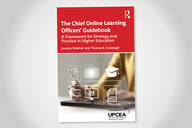You have /5 articles left.
Sign up for a free account or log in.
The American college president's office overwhelmingly remains a haven for white men -- but increasingly, those white men are over 60, too, a study released today by the American Council on Education shows.
"The American College President," an every-few-years profile of demographic and other characteristics of campus chief executives, in some ways shows very little change from its last iteration, in 2006. The average age in 2011 had crept up to 60.7 years from 59.9 years, men filled 73.6 percent of jobs compared to 77 percent, and minority presidents had actually lost a bit of ground, to 12.6 percent of campus CEOs from 13.6 percent in 2006 (even counting historically black colleges).
But other demographic data about today's crop of presidents leave the overpowering -- and, to ACE President Molly Corbett Broad, the "sobering" -- impression that postsecondary institutions face a potentially sweeping turnover in their top jobs.
While the average age may only have edged up (by less than a year) since 2006, the proportion of presidents who are older (and presumably closer to retirement) has soared. In 1986, when ACE first conducted its survey of presidents, 42 percent of campus leaders were 50 or under, and only 14 percent were 61 or older.
By 2006, nearly half of presidents (49.3 percent) were 61 and over, and the new ACE survey shows that percentage rising to 58 percent in 2011.
Asked in a call with reporters what might account for the accelerating graying of the presidency over the last 25 years, Broad attributed it in part to the increasing time it takes academics to earn their Ph.D.s and the later age at which many are earning tenure. She said she also suspected that, when hiring for what she called “increasingly complex and challenging jobs,” many boards are “going to have in mind having someone who has sufficient experience in a wide array of areas,” which is likely to lead them to older candidates.
Broad and Bryan Cook, who directs ACE’s Center for Policy Analysis and is a lead author of the study of presidents’ said that the “anticipated wave of retirements” among presidents is of “great concern and may present challenges or even a temporary leadership shortage,” as Cook described it. Given the financial problems that many institutions are confronting, and the leadership that may be necessary to help colleges maneuver through that climate, the turnover could be problematic, they said.
A potential upside, though, Broad said, is “the opportunity it will present to make gains in furthering diversity,” which she said the survey showed remains a “significant challenge” for higher education.
Women continued to make modest gains in their representation among college presidents, with the proportion of female chief executives rising to 26.4 percent from 23.0 percent in 2006, 19.3 percent in 1998, and 9.5 percent in 1986. Women are now roughly evenly represented (at between 22 and 23 percent) in all sectors other than community colleges, where a third of presidents are women. Those figures include women's colleges, where female presidents are the norm.
The proportion of college presidents who are members of minority groups continues to lag badly their representation in the overall population. The backsliding on that front since 2006 has been slight, with the share of presidents who are white edging up to 87.2 percent from 86.4, but Broad described it as concerning nonetheless. When historically black and other minority-serving institutions are excluded, only 9 percent of presidents are members of minority groups.
And the situation does not seem to be improving, as minority group members were slightly less well-represented among the presidents in 2011 who were recently hired than they were among all presidents.
The survey’s data on where presidents came from supports the anecdotal impression of many higher education analysts that colleges are increasingly turning to leaders from nontraditional backgrounds to guide them through turbulent times.
While the chief academic officer’s job remains the most common path to the presidency – with 34 percent of presidents having served as provost in their previous position – one in five presidents in 2011 moved into their jobs from outside academe, up from 13 percent in 2006 and 15 percent in 2001.
Other highlights of the survey include:
- The average length of service for presidents in 2011 was seven years, down from 8.5 years in 2006. Cook said that the seven-year term is more consistent with historical trends than was the 2006 figure, which he characterized as an anomaly.
- Search consultants were used in 60 percent of recent presidential hirings in 2011, up from 49 percent in 2006.





